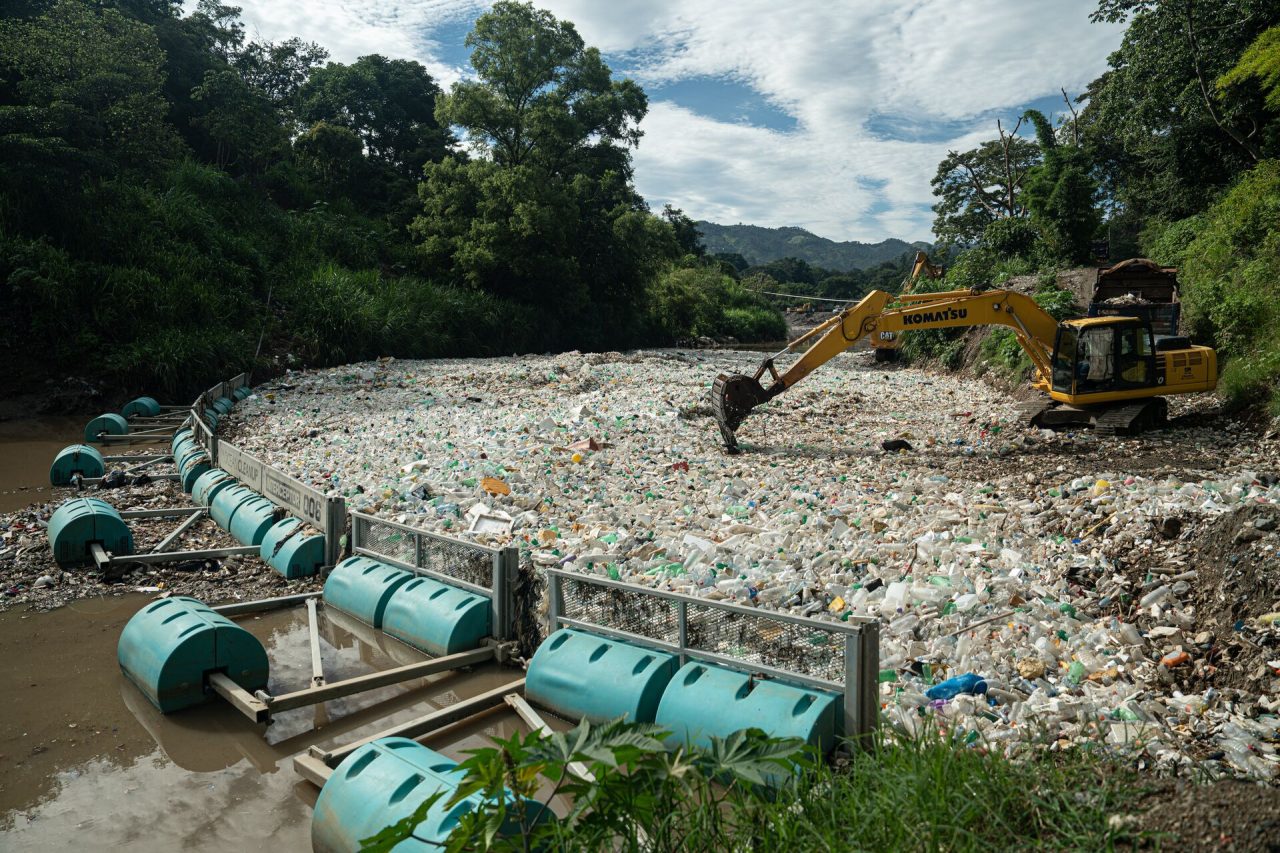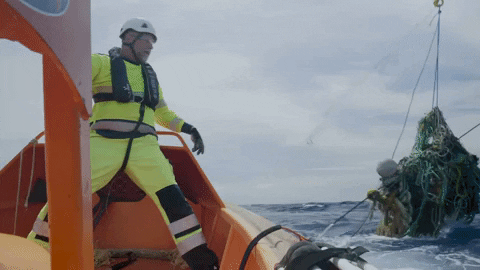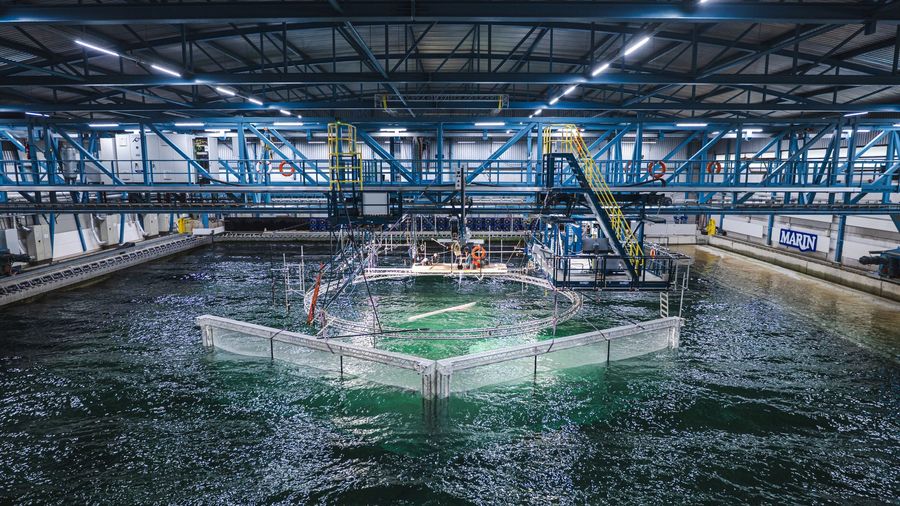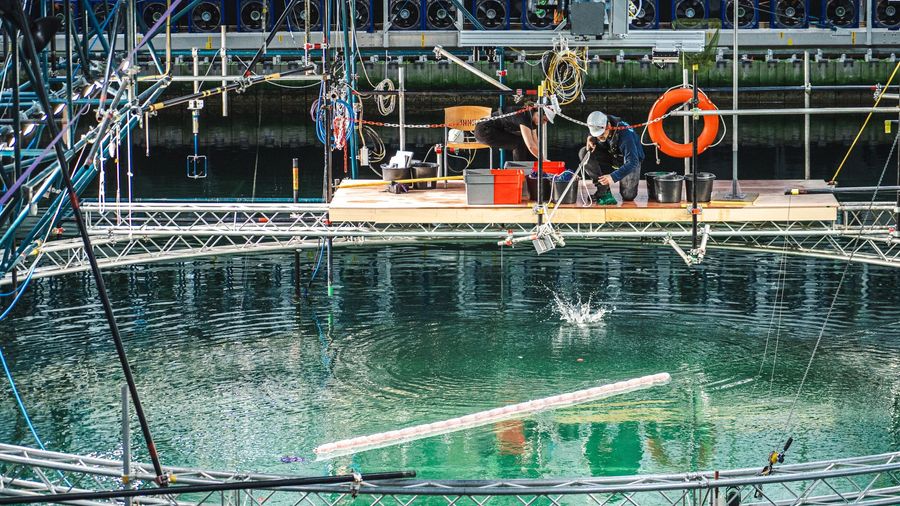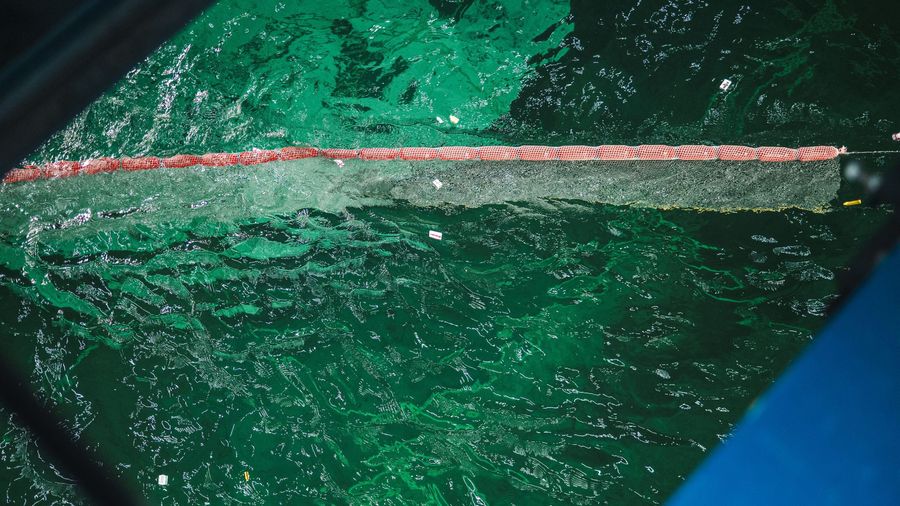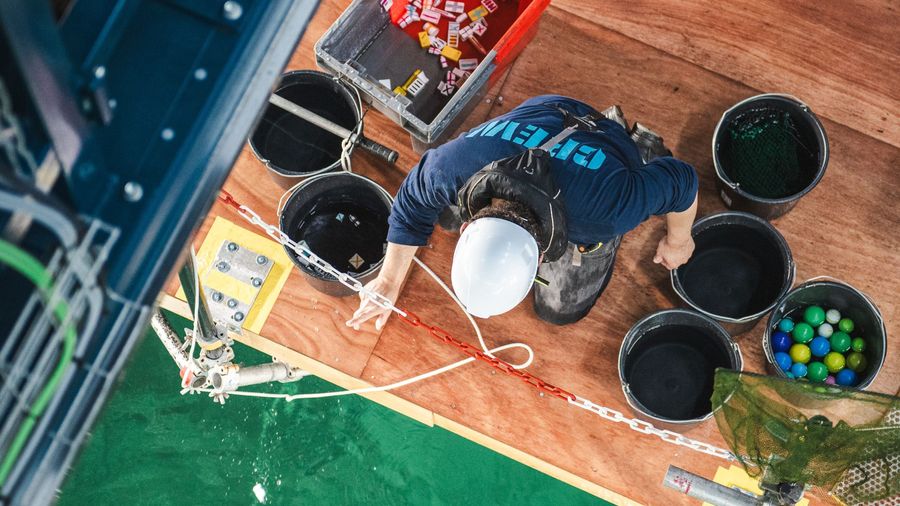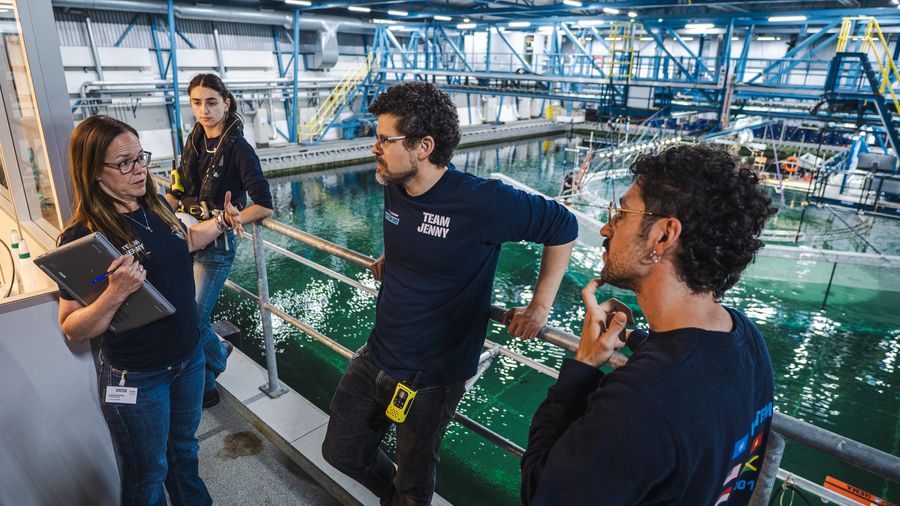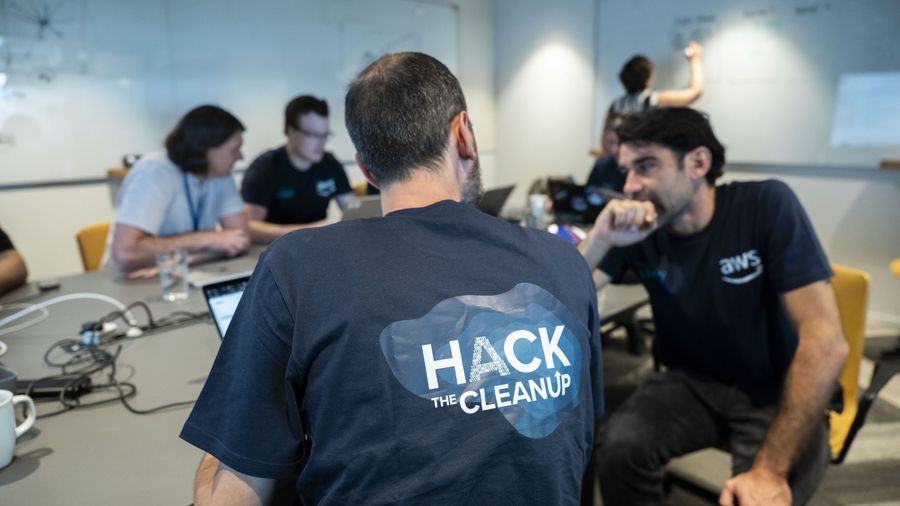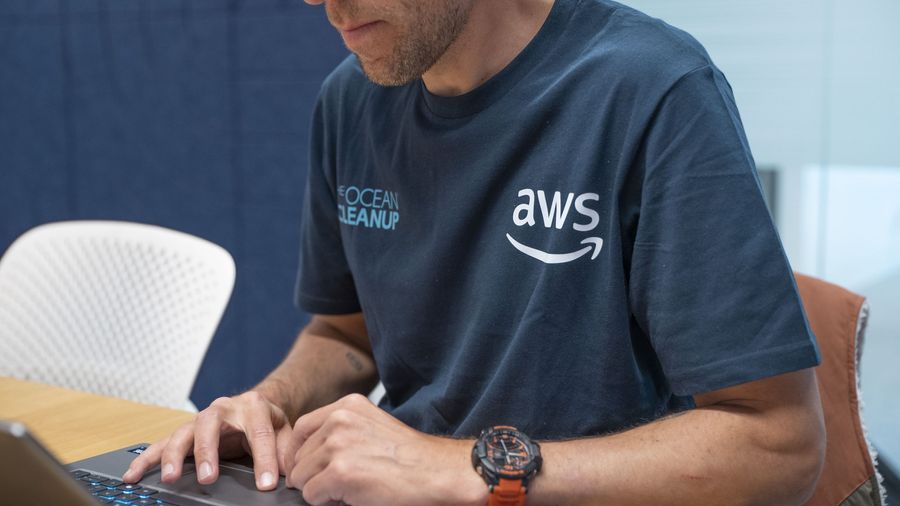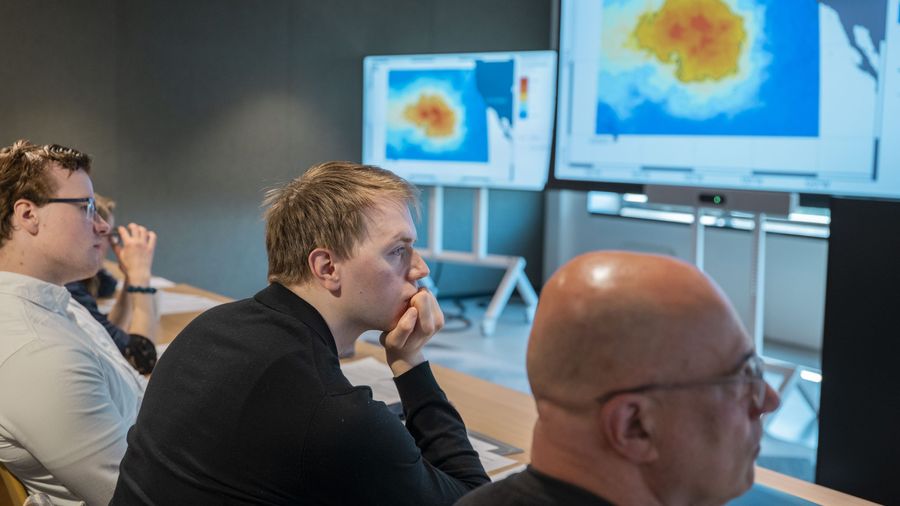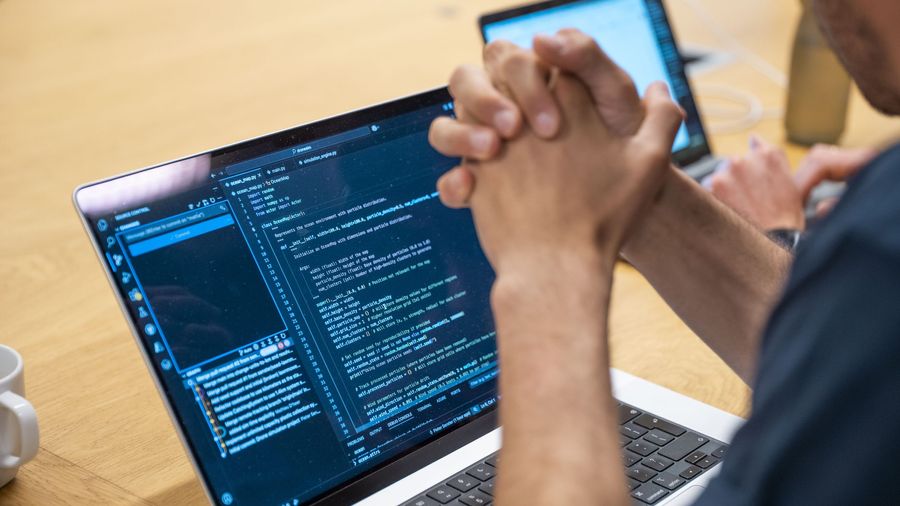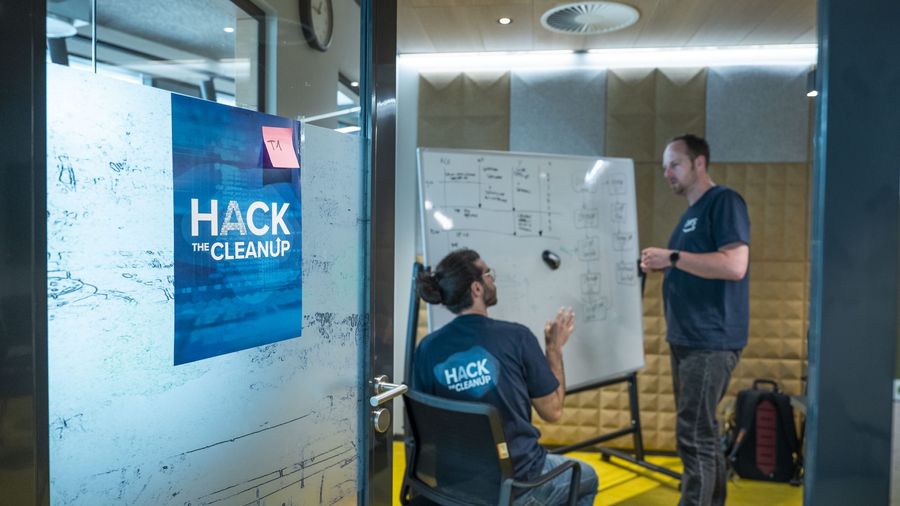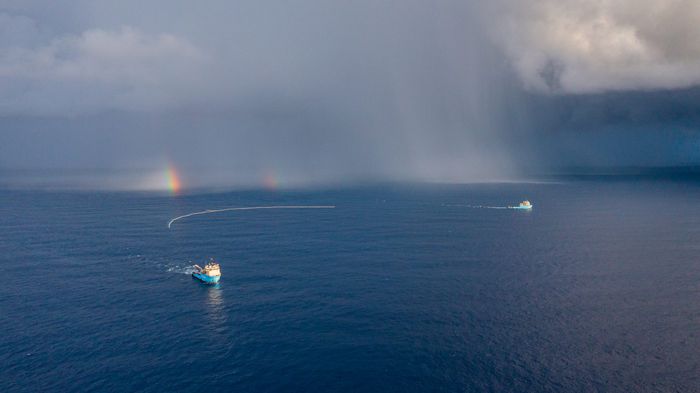
Advancing ocean cleanup through innovation and research
Back to updatesAt The Ocean Cleanup, we’re continually working to improve the efficiency and effectiveness of our operations in the Great Pacific Garbage Patch (GPGP), one of the most plastic-polluted areas of our oceans.
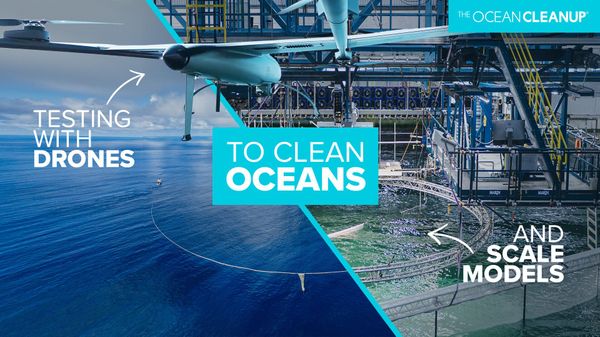
Scale model testing
To support the next phase of cleanup, we are collaborating with the Maritime Research Institute Netherlands (MARIN), a world-class facility specializing in scale model testing under offshore conditions. At their state-of-the-art indoor basin, which holds over two million gallons of water, we’ve been able to simulate real ocean conditions at scale, allowing us to study how plastic behaves within our collection system and optimize retention performance.
Smart tracking
As part of this testing, our team created 3D-printed scale models of real-world debris to track how various items interact with our system in dynamic marine environments. These insights are helping us refine every component of our cleanup technology.
Meanwhile, our focus on data and detection continues to expand. We are deploying cutting-edge technologies to map high-density plastic “hotspots” in the GPGP, enabling us to extract plastic more efficiently and cost-effectively. As part of this effort, we’ve partnered with Amazon Web Services (AWS) to harness the power of artificial intelligence, machine learning, and cloud computing, accelerating our capacity to detect, predict, and extract plastic at scale.
Drone testing
We’re also conducting aerial drone tests in South Africa, helping us better understand how plastic detection can be optimized under various weather conditions and at different times of day. These tests include the use of infrared sensors for nighttime detection, a promising step forward in improving 24/7 operational efficiency.
In parallel, we are advancing our Automated Debris Imaging System (ADIS), which enables us to capture detailed data on collected plastic and continuously improve system performance.
Each of these initiatives contributes to a larger goal: achieving a 90% reduction in floating ocean plastic, in collaboration with our Global Mission Partner Kia. By combining engineering, science, and strategic partnerships, we are pushing the boundaries of what’s possible in large-scale environmental cleanup—helping to protect marine ecosystems and ensure a cleaner future for our oceans.
